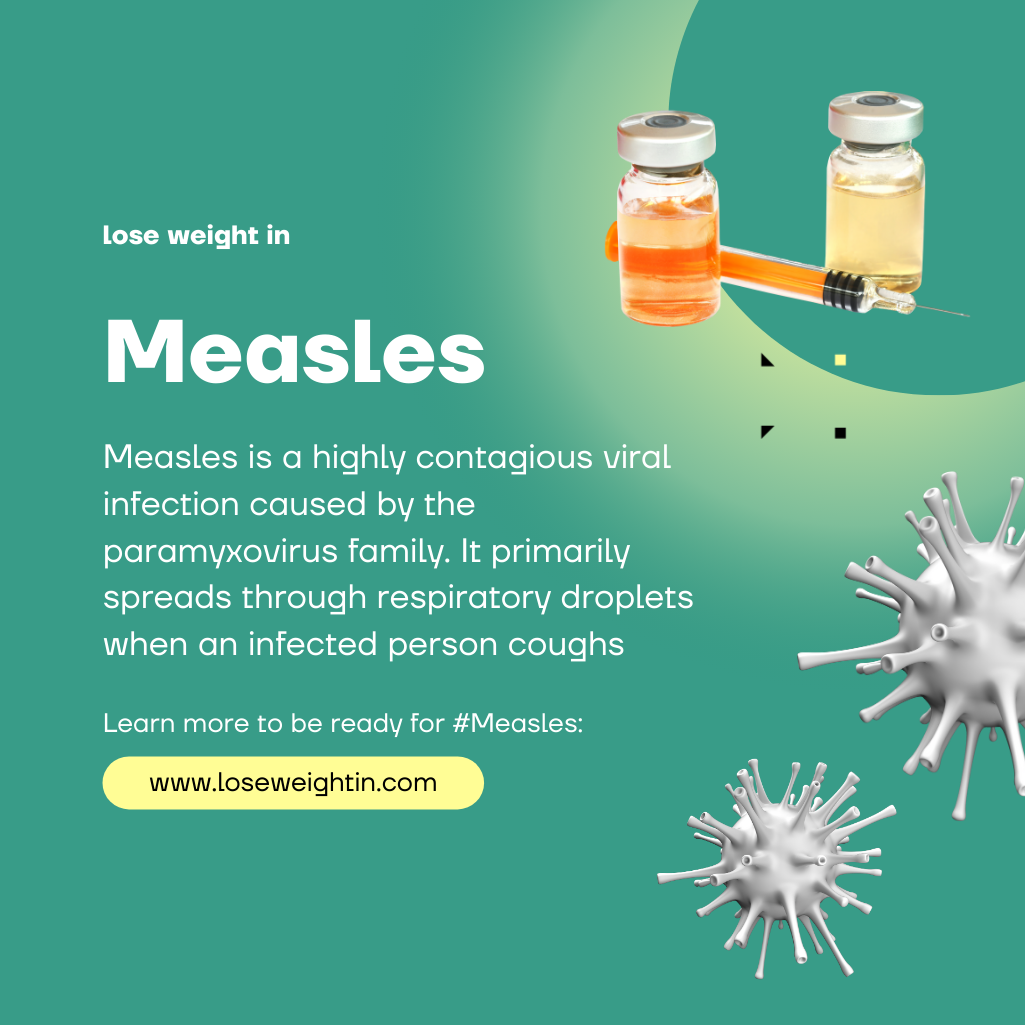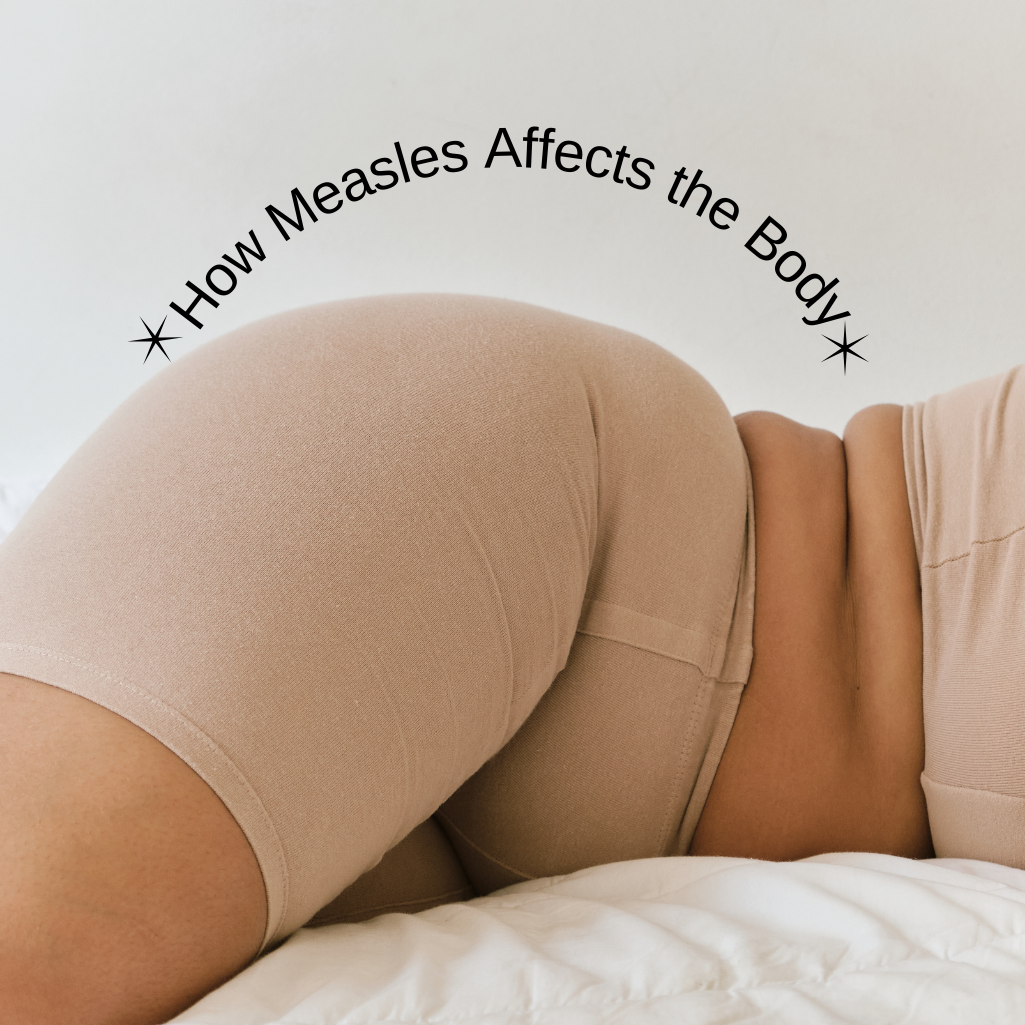What is Measles?
Measles is a highly contagious viral infection caused by the paramyxovirus family. It primarily spreads through respiratory droplets when an infected person coughs or sneezes. Despite the availability of vaccines, measles remains a significant global health concern, especially in regions with low immunization coverage.
Symptoms of Measles
Measles symptoms typically appear 10-14 days after exposure and progress in distinct stages:
1. Early Symptoms (Prodromal Phase)
- High fever, often exceeding 104°F (40°C)
- Persistent cough
- Runny nose (coryza)
- Red, watery eyes (conjunctivitis)
- Extreme fatigue and irritability
2. Koplik’s Spots
- Small white spots with a bluish center appear on the inner lining of the cheeks, typically 2-3 days after initial symptoms.
3. Rash Development
- A red, blotchy rash starts at the hairline and spreads downward to the trunk and limbs.
- The rash lasts for 5-6 days, gradually fading.
- Skin may peel as the rash heals.
How Measles Affects the Body
Measles is not just a rash and fever; it can severely impact multiple organ systems, leading to life-threatening complications.
1. Respiratory System Complications
- Pneumonia: One of the most common causes related deaths, especially in young children.
- Bronchitis: Inflammation of the bronchial tubes, causing severe coughing and breathing difficulties.
- Laryngotracheobronchitis (Croup): Swelling in the larynx and trachea leads to a barking cough and difficulty breathing.
2. Nervous System Complications
- Encephalitis: A rare but severe brain inflammation, occurring in 1 in 1,000 cases. It can lead to permanent brain damage or death.
- Subacute Sclerosing Panencephalitis (SSPE): A rare, fatal neurological disorder that appears years after measles infection, causing cognitive decline, seizures, and paralysis.
3. Immune System Suppression
- weakens the immune system, making individuals susceptible to secondary bacterial infections.
- It can cause “immune amnesia,” wiping out previously acquired immunity to other diseases, increasing vulnerability to infections like tuberculosis and influenza.
Who is at Risk?
Certain populations are at higher risk for severe measles complications:
- Infants under 12 months (too young for vaccination)
- Pregnant women (higher risk of miscarriage, preterm labor, and low birth weight)
- Malnourished children, particularly those with vitamin A deficiency
- Immunocompromised individuals, including HIV/AIDS patients and cancer patients
Vaccine: The Best Prevention
1. MMR Vaccine (Measles, Mumps, Rubella)
- The first dose is given at 12-15 months.
- A booster dose is administered at 4-6 years.
- Effectiveness: 97% effective in preventing measles after two doses.
2. Herd Immunity and Its Importance
- 95% vaccine coverage is needed to prevent outbreaks.
- When a high percentage of the population is immunized, even unvaccinated individuals are protected.
Consequences of Measles Outbreaks
1. Increased Mortality Rates
- Measles remains a leading cause of childhood mortality in underdeveloped regions.
- In 2021, caused over 128,000 deaths worldwide, mostly among unvaccinated children.
2. Economic Burden
- Hospitalization costs, prolonged medical care, and loss of productivity create significant financial strain on families and healthcare systems.
3. Global Public Health Crisis
- Vaccine hesitancy, misinformation, and inadequate healthcare infrastructure contribute to resurgence in many developed countries.
- WHO and CDC emphasize the need for mass immunization campaigns to curb outbreaks.
Conclusion
Measles is a preventable yet highly dangerous disease that poses severe health risks, especially for children and immunocompromised individuals. The MMR vaccine is the most effective way to protect against measles, reducing the risk of severe complications and preventing widespread outbreaks. Public awareness, vaccination programs, and global cooperation are essential to eliminating measles and safeguarding public health.
Prevention Methods for Measles
Introduction
Measles is a highly contagious viral infection that poses a significant health risk worldwide. The disease spreads through respiratory droplets and can lead to severe complications, including pneumonia, encephalitis, and even death. Effective prevention strategies are essential in reducing the spread of measles and protecting public health. Below, we outline the best prevention methods for measles to help safeguard individuals and communities.
1. Vaccination: The Most Effective Prevention Method
The Importance of the Measles Vaccine
The Measles, Mumps, and Rubella (MMR) vaccine is the most effective way to prevent measles. The vaccine provides long-term immunity and is included in routine childhood immunization schedules worldwide.
Vaccination Schedule
- First dose: Administered at 12-15 months of age.
- Second dose: Given at 4-6 years of age.
- Catch-up vaccination: Recommended for those who missed their childhood doses.
- Travelers and healthcare workers: Those at higher risk should ensure they are fully vaccinated.
Herd Immunity and Community Protection
Vaccination does not only protect individuals but also contributes to herd immunity, reducing the risk of outbreaks. For measles, at least 95% of the population must be vaccinated to prevent the spread of the disease.
2. Public Awareness and Education
Informing the Public About Measles
Educational campaigns help individuals understand the risks associated with and the importance of vaccination. These initiatives should focus on:
- Symptoms of measles, such as high fever, cough, runny nose, and a red rash.
- How measles spreads, emphasizing airborne transmission and direct contact.
- The importance of vaccination and booster shots.
Combating Vaccine Misinformation
Misinformation about vaccines has contributed to vaccine hesitancy. It is essential to provide science-based evidence to counter myths and ensure public trust in immunization programs.
3. Strengthening Immunization Programs
Government and Healthcare Policies
To prevent effectively, governments must strengthen immunization programs by:
- Ensuring vaccine availability in all healthcare facilities.
- Conducting nationwide immunization campaigns to reach unvaccinated populations.
- Enforcing school-entry vaccination requirements to reduce outbreaks in educational settings.
Outreach to Underserved Communities
Many outbreaks occur in areas with low vaccination rates. Special initiatives should target rural, remote, and low-income areas, ensuring equal access to vaccines.
4. Rapid Response to Outbreaks
Early Detection and Surveillance
Rapid detection of measles cases is crucial for containment. Public health authorities should:
- Implement surveillance systems to monitor cases and outbreaks.
- Encourage healthcare providers to report suspected cases immediately.
- Conduct laboratory testing to confirm infections.
Quarantine and Isolation Measures
To prevent further transmission, authorities should:
- Isolate infected individuals for at least four days after the rash appears.
- Quarantine unvaccinated contacts for 21 days if exposure is confirmed.
- Close schools or public areas temporarily in case of severe outbreaks.
5. Good Hygiene and Infection Control
Preventing Airborne Transmission
Since measles spreads through respiratory droplets, proper hygiene measures can reduce transmission. Recommended practices include:
- Frequent handwashing with soap and water.
- Covering mouth and nose when sneezing or coughing.
- Wearing masks in outbreak-prone areas.
- Regular disinfection of surfaces in schools, hospitals, and public places.
6. Travel Precautions
Vaccination Before Traveling
International travelers should ensure they are vaccinated against measles, especially if visiting regions with active outbreaks.
- Infants as young as 6 months old may receive an early dose before traveling.
- Adults should check their immunization records and get booster shots if necessary.
Avoiding High-Risk Areas
If traveling to an area with a measles outbreak:
- Avoid crowded places and healthcare facilities where exposure risk is high.
- Wear protective masks and practice good hygiene.
7. Promoting Research and Development
Enhancing Vaccine Formulations
Continued investment in research ensures improved vaccine effectiveness and accessibility. Efforts should focus on:
- Developing single-dose vaccines for broader protection.
- Exploring alternative vaccine delivery methods such as nasal sprays.
- Enhancing cold chain storage solutions to maintain vaccine efficacy in remote areas.
Investigating Measles Treatments
Currently, no specific antiviral treatment for measles exists. However, researchers are working on:
- Antiviral drugs to reduce disease severity.
- Improved supportive care protocols for measles patients.
Conclusion
Preventing measles requires a comprehensive approach that includes vaccination, public awareness, rapid outbreak response, and improved hygiene practices. Governments, healthcare professionals, and communities must collaborate to ensure high immunization coverage and prevent future outbreaks. By taking proactive steps, we can eliminate measles and safeguard public health.



